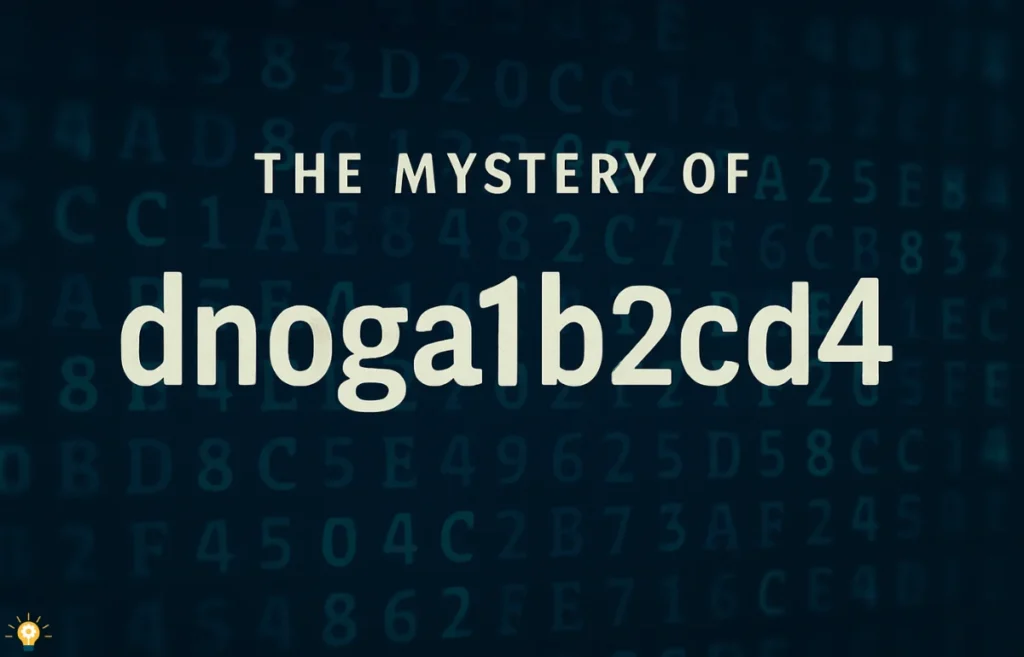What is dnoga1b2c3d4?
Dnoga1b2c3d4 is a concept that has gained prominence in various fields due to its unique characteristics and applications. Fundamentally, dnoga1b2c3d4 can be defined as a specialized framework or methodology that enhances processes in its respective domain. Its origins trace back to a series of groundbreaking developments aimed at innovating existing practices, making it a significant component of modern advancements.
The significance of dnoga1b2c3d4 lies in its ability to bridge theoretical knowledge and practical application. By providing a structured approach, dnoga1b2c3d4 allows professionals to tackle challenges more efficiently and effectively. Its development was influenced by the demand for more robust solutions that could integrate seamlessly with emerging technologies and practices. This evolution illustrates how dnoga1b2c3d4 is not merely a fleeting trend but rather a fundamental tool that continues to shape its field.
In practical terms, dnoga1b2c3d4 has been applied in various scenarios, showcasing its versatility. For example, industries such as technology, healthcare, and education have all benefitted from integrating dnoga1b2c3d4 principles into their operational models. In technology, it fosters enhanced algorithmic processes, while in healthcare, it contributes to better patient management systems. Moreover, in educational settings, dnoga1b2c3d4 supports innovative teaching methodologies that cater to diverse learning needs.
Through these applications, the value of dnoga1b2c3d4 becomes evident, as it not only provides solutions but also promotes continuous improvement. As we explore further in this blog post, it is crucial to understand how dnoga1b2c3d4 can be leveraged to maximize its potential and achieve optimal results within its field.
The Applications of dnoga1b2c3d4

The integration of dnoga1b2c3d4 into various fields has significantly transformed traditional methodologies, offering innovative solutions and enhancements. One prominent application of dnoga1b2c3d4 can be seen in the technology sector, particularly in software development. By utilizing this framework, developers have been able to streamline their processes and improve the quality of applications. This results in higher productivity and reduced time-to-market, ultimately benefiting businesses striving for competitiveness in a fast-paced environment.
Furthermore, dnoga1b2c3d4 has gained considerable traction in data analysis and processing. Organizations are increasingly turning to this approach to manage vast datasets more efficiently. The capabilities of dnoga1b2c3d4 allow for the real-time processing and analysis of data, which provides valuable insights that can drive decision-making. This is particularly advantageous in sectors like finance and healthcare, where timely information is crucial.
Another vital area where dnoga1b2c3d4 has made its mark is in education. Educational institutions have embraced this innovative framework to enhance their curriculum and facilitate collaborative learning. The adoption of dnoga1b2c3d4 in e-learning platforms allows for personalized learning experiences, catering to diverse student needs. As a result, learners can engage more effectively with the material, fostering a deeper understanding and retention of knowledge.
In the realm of marketing, dnoga1b2c3d4 serves as an effective tool to analyze consumer behavior. Marketers leverage this approach to design targeted campaigns, enhancing customer engagement and conversion rates. By understanding the nuances of consumer interactions through dnoga1b2c3d4, organizations can tailor their offerings to meet the specific needs of their audience.
In conclusion, the diverse applications of dnoga1b2c3d4 across multiple sectors underscore its versatility and effectiveness. As more industries recognize the advantages of incorporating this framework, it is poised to play an increasingly vital role in driving innovation and efficiency in the future.
Challenges and Limitations of dnoga1b2c3d4
The implementation of dnoga1b2c3d4 is fraught with a variety of challenges and limitations that practitioners must navigate. One of the primary hurdles faced when working with dnoga1b2c3d4 involves the steep learning curve associated with its tools and methodologies. Practitioners often require extensive training to fully grasp the intricate frameworks and standards that govern dnoga1b2c3d4. This initial barrier can lead to inefficiencies and slow adoption rates within organizations.
Moreover, the technical complexity of dnoga1b2c3d4 can result in compatibility issues with existing systems and processes. Many businesses find that their legacy systems are not easily adaptable to the integrated features of dnoga1b2c3d4, leading to additional resource allocation for upgrades and integrations. This can strain budgets and timelines, as organizations grapple with both the technological demands and the need for operational continuity.
Another significant challenge is the ongoing maintenance and support required for dnoga1b2c3d4 once it is implemented. Continuous updates, training refreshers, and troubleshooting can become resource-intensive, particularly in environments where personnel turnover is high. Companies must invest in sustained learning initiatives to keep teams abreast of the evolving landscape of dnoga1b2c3d4.
In addressing these hurdles, organizations can adopt several strategies. First, fostering a culture of continuous learning within the workforce can alleviate some of the training challenges. Providing access to extensive resources and hands-on workshops can enhance practitioners’ confidence and proficiency in using dnoga1b2c3d4 effectively. Additionally, conducting thorough assessments of existing systems prior to adoption can improve compatibility and streamline integration efforts. By recognizing and addressing these limitations, practitioners can navigate the complexities inherent in dnoga1b2c3d4 with greater ease.
The Future of dnoga1b2c3d4
As we explore the future of dnoga1b2c3d4, it is important to recognize the rapidly changing landscape of technology and its implications for various sectors. Emerging trends indicate that dnoga1b2c3d4 is poised for significant advancements as it integrates with cutting-edge technologies such as artificial intelligence, machine learning, and blockchain. These developments will not only enhance the capabilities of dnoga1b2c3d4 but also broaden its applicability across diverse industries.
One of the key trends is the increasing demand for real-time data processing and analytics, which dnoga1b2c3d4 can effectively provide. As organizations strive for improved decision-making and operational efficiency, the functionality of dnoga1b2c3d4 in streamlining these processes will become vital. Experts predict that we will witness substantial innovations that will further optimize the performance of dnoga1b2c3d4 in handling complex datasets, thereby reinforcing its role as a powerful tool in data management and analytics.
In addition to advancements in technology, regulatory changes may also shape the future direction of dnoga1b2c3d4. As data privacy and security concerns become increasingly paramount, solutions like dnoga1b2c3d4 could evolve to ensure compliance with stringent regulations. This evolution will not only promote trust but will also facilitate expanded adoption across sectors concerned with data integrity.
Furthermore, the collaboration between interdisciplinary teams will be crucial. By leveraging insights from various fields, dnoga1b2c3d4 can adapt to the unique challenges faced by different industries. As the understanding of dnoga1b2c3d4 deepens among professionals, we anticipate innovative applications emerging that could redefine existing paradigms.
In conclusion, the future of dnoga1b2c3d4 is marked by transformative potential and exciting possibilities, setting the stage for advancements that will impact numerous sectors significantly.


